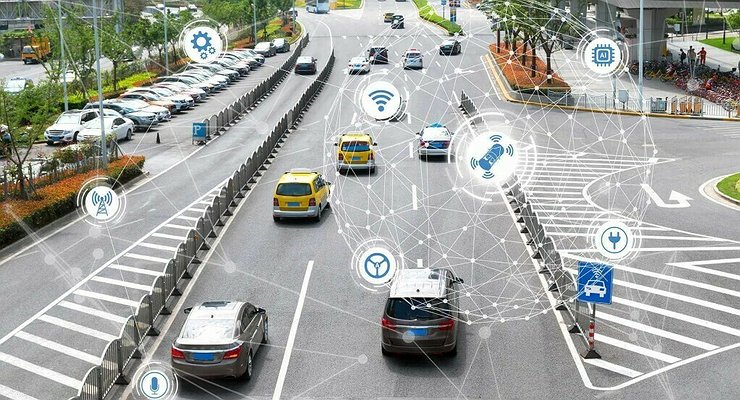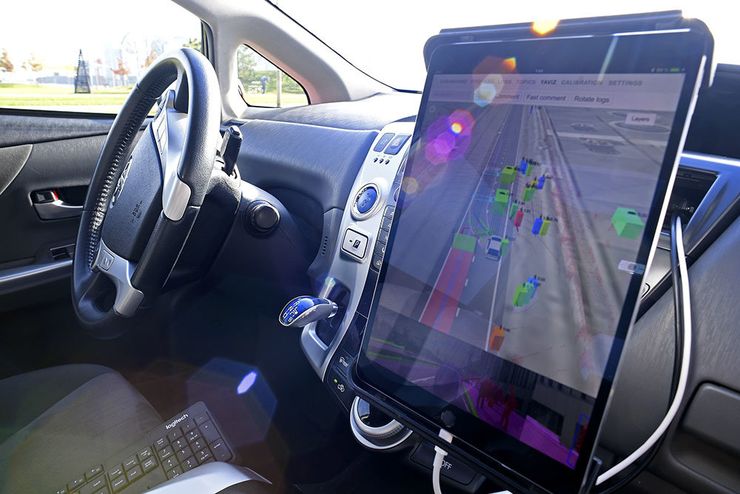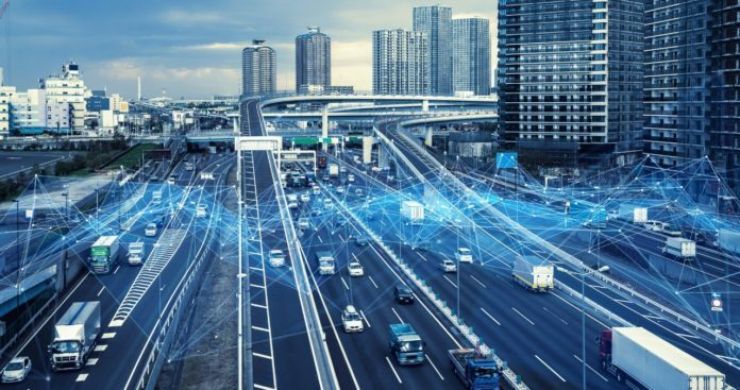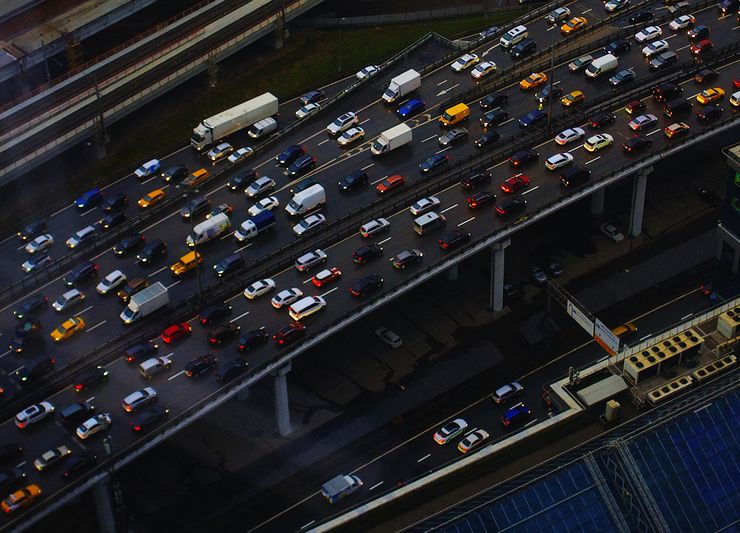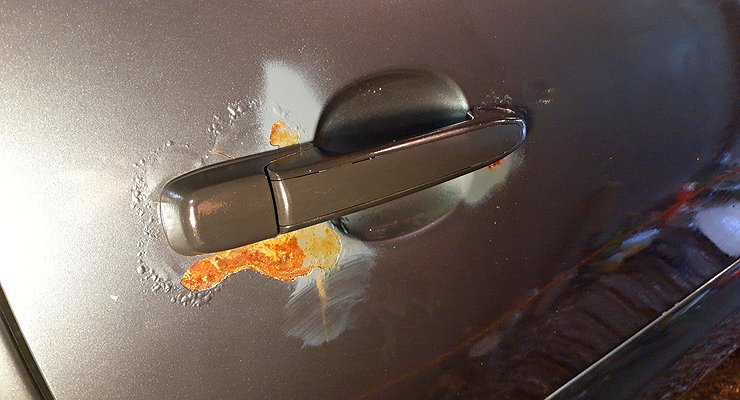An unmanned vehicle, a vehicle equipped with an automatic control system and moving safely without human intervention, has become a reality. Since they are no longer an invention of the Soviet science fiction writer Alexander Kazantsev, drones firmly enter the life of a modern person. And any innovation, especially related to human security, requires careful study before being implemented. It is one thing to design a postman robot that ‘takes risks’ only with a letter or package, and quite another to launch hundreds of drones through the streets of megacities near Moscow or St. Petersburg.
Drones are already proven to be profitable. There are at least two visible benefits of such an innovation. The first is the absence of drivers who do not have to pay wages, as well as the disappearance of the influence of the human factor: fatigue and overwork.The second is that a special system allows cars to drive in tandem almost closely, forming special “trains” .
This technology is called “platooning” from the English term platooning, which means moving cars on autopilot in a motorcade. This advantage will make it possible to achieve significant fuel savings, for example in freight transport. It is clear that the introduction of drones will hit several areas at once.
What needs to be changed?
Firstly, the unmanned vehicles themselves will have to be adapted. Those who go first on the track have only the third or fourth level of autonomy, that is, their operation is possible only in special areas, under certain conditions. Today, we must focus on creating a car with the highest level of autonomy – the fifth, when the drone can travel independently on the road without a driver.
Second, we need a modified or completely new infrastructure. Construction of modern, high-quality roads, development of digital twins of road transport infrastructure and introduction of high-precision communication technologies.
Third, there is still much work to be done on the regulatory framework, which will regulate the traffic of unmanned vehicles in the general flow in the future. Thus, unmanned vehicles can enter our lives and not only drive on special routes, but be deployed everywhere.
As you know, modern cars already have assistance systems that allow you to drive on the road in good weather without driver intervention, with good visibility and accurate markings. But so far, automation in production cars is only at the third level of autonomy, and a person behind the wheel requires his constant attention to the traffic situation.
In this regard, a fundamental factor for the operation of an unmanned vehicle is the availability of a high-quality roadway, markings, signs and navigation. The next important element is therefore the digital twin of road transport infrastructure (DTI). This is followed by solutions based on the V2X protocol, with which you can interact with the road infrastructure and also provide the car with a clear navigation system.
An additional factor in the introduction of UAVs will undoubtedly be a cooperative system for recognizing road conditions, whereby self-driving cars can pass on relevant information about road objects and road users to each other. Interaction with elements of the road infrastructure, as well as the interaction of vehicles with each other, will help to optimize traffic and prevent accidents.
V2X technology
One of the key systems was the technology based on the vehicle-to-everytning (V2X) protocol, which connects the car to the road infrastructure, including traffic lights. Based on the received weather data and DTI, the trip can be managed automatically. With V2X you can receive information about changing traffic conditions and data about who is where.
V2X is divided into V2V (machine-machine), V2I (machine infrastructure-infrastructure machine) and V2N (machine network). Speaking of V2I, we mean the receipt by the car of data about the state of the infrastructure and the transfer of data to the infrastructure about the state of the car.
That is, obtaining data about a traffic light signal, near a road sign, about current traffic events in the vicinity. And cars pass on information about their own condition to each other: sudden braking, turning the steering wheel and exact location. The infrastructure and the vehicle transmit data. This is similar to the “eyes” of a particular information system installed on board the car.
For manned vehicles, V2X provides greater safety: what the driver may miss or not see, the system will display on the instruments and display in an understandable way.
For drones, this technology is no less important, as they spend a certain amount of computing resources in the city and outside the city to read out information from the infrastructure (to see signs, traffic lights, etc.). V2X helps to obtain reliable information about the infrastructure, written in keys. That is, drones don’t spend their computing resources on this.
The V2X technology itself is not a requirement for unmanned vehicles, but its presence will significantly increase their speed of movement while improving road safety and reducing the load on computer systems. But even with the smooth operation of the whole system, it is necessary to develop the entire road infrastructure as a whole: from roads and markings to equipment for analysis and monitoring.
Drones are already proven to be profitable. There are at least two visible benefits of such an innovation. The first is the absence of drivers who do not have to pay wages, as well as the disappearance of the influence of the human factor: fatigue and overwork.The second is that a special system allows cars to drive in tandem almost closely, forming special “trains” .
This technology is called “platooning” from the English term platooning, which means moving cars on autopilot in a motorcade. This advantage will make it possible to achieve significant fuel savings, for example in freight transport. It is clear that the introduction of drones will hit several areas at once.
What needs to be changed?
Firstly, the unmanned vehicles themselves will have to be adapted. Those who go first on the track have only the third or fourth level of autonomy, that is, their operation is possible only in special areas, under certain conditions. Today, we must focus on creating a car with the highest level of autonomy – the fifth, when the drone can travel independently on the road without a driver.
Second, we need a modified or completely new infrastructure. Construction of modern, high-quality roads, development of digital twins of road transport infrastructure and introduction of high-precision communication technologies.
Third, there is still much work to be done on the regulatory framework, which will regulate the traffic of unmanned vehicles in the general flow in the future. Thus, unmanned vehicles can enter our lives and not only drive on special routes, but be deployed everywhere.
As you know, modern cars already have assistance systems that allow you to drive on the road in good weather without driver intervention, with good visibility and accurate markings. But so far, automation in production cars is only at the third level of autonomy, and a person behind the wheel requires his constant attention to the traffic situation.
In this regard, a fundamental factor for the operation of an unmanned vehicle is the availability of a high-quality roadway, markings, signs and navigation. The next important element is therefore the digital twin of road transport infrastructure (DTI). This is followed by solutions based on the V2X protocol, with which you can interact with the road infrastructure and also provide the car with a clear navigation system.
An additional factor in the introduction of UAVs will undoubtedly be a cooperative system for recognizing road conditions, whereby self-driving cars can pass on relevant information about road objects and road users to each other. Interaction with elements of the road infrastructure, as well as the interaction of vehicles with each other, will help to optimize traffic and prevent accidents.
V2X technology
One of the key systems was the technology based on the vehicle-to-everytning (V2X) protocol, which connects the car to the road infrastructure, including traffic lights. Based on the received weather data and DTI, the trip can be managed automatically. With V2X you can receive information about changing traffic conditions and data about who is where.
V2X is divided into V2V (machine-machine), V2I (machine infrastructure-infrastructure machine) and V2N (machine network). Speaking of V2I, we mean the receipt by the car of data about the state of the infrastructure and the transfer of data to the infrastructure about the state of the car.
That is, obtaining data about a traffic light signal, near a road sign, about current traffic events in the vicinity. And cars pass on information about their own condition to each other: sudden braking, turning the steering wheel and exact location. The infrastructure and the vehicle transmit data. This is similar to the “eyes” of a particular information system installed on board the car.
For manned vehicles, V2X provides greater safety: what the driver may miss or not see, the system will display on the instruments and display in an understandable way.
For drones, this technology is no less important, as they spend a certain amount of computing resources in the city and outside the city to read out information from the infrastructure (to see signs, traffic lights, etc.). V2X helps to obtain reliable information about the infrastructure, written in keys. That is, drones don’t spend their computing resources on this.
The V2X technology itself is not a requirement for unmanned vehicles, but its presence will significantly increase their speed of movement while improving road safety and reducing the load on computer systems. But even with the smooth operation of the whole system, it is necessary to develop the entire road infrastructure as a whole: from roads and markings to equipment for analysis and monitoring.
Source: Avto Vzglyad
I’m Sandra Torres, a passionate journalist and content creator. My specialty lies in covering the latest gadgets, trends and tech news for Div Bracket. With over 5 years of experience as a professional writer, I have built up an impressive portfolio of published works that showcase my expertise in this field.







